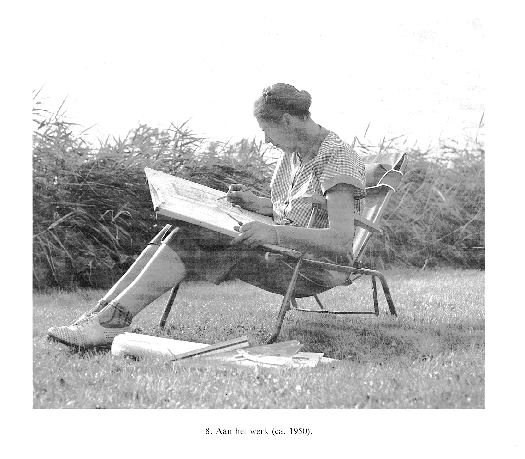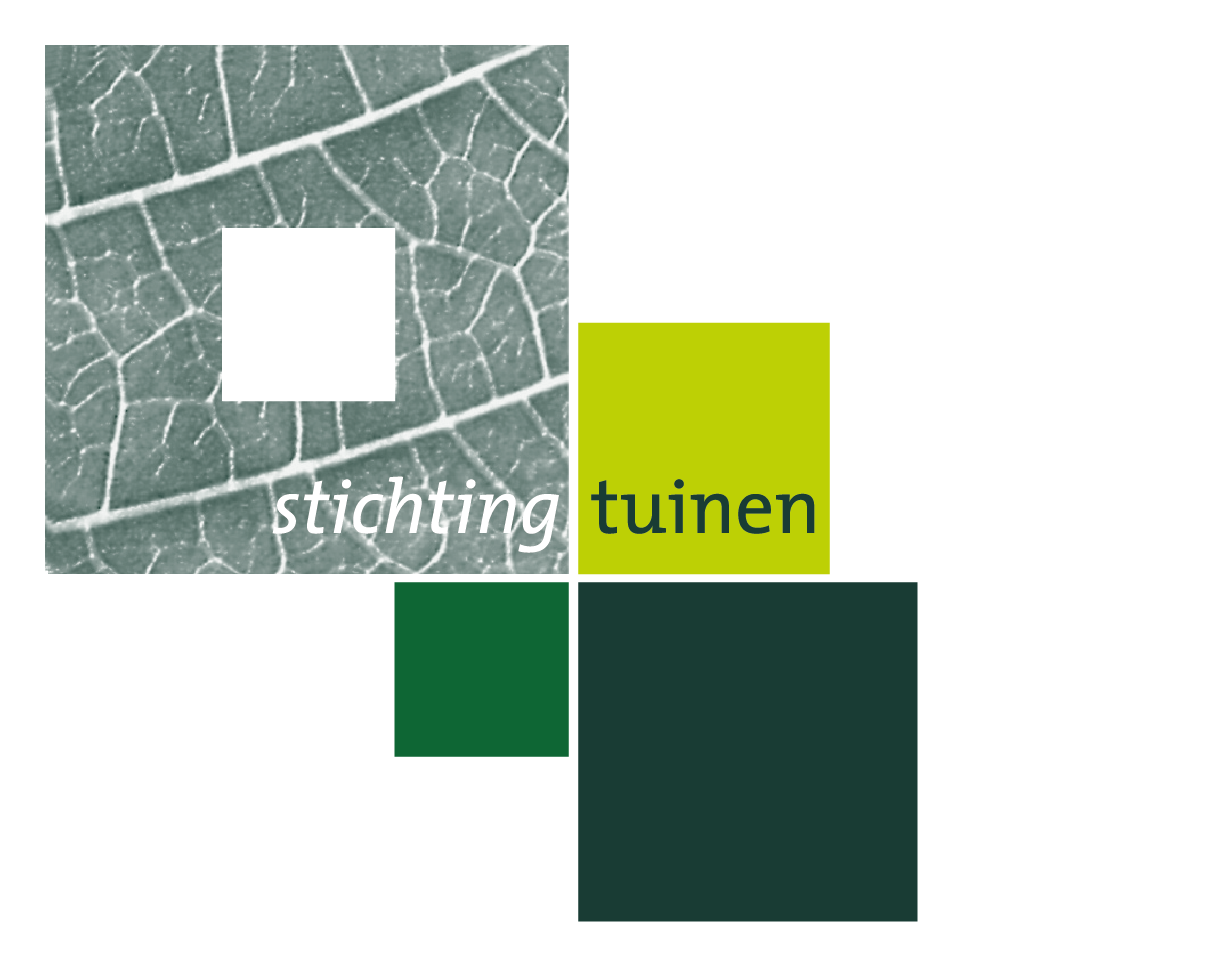Mien Ruys
12 April 1904 - 9 January 1999
In numerous publications at home and abroad, in various radio and TV broadcasts, and documentaries, much attention has been paid to the life and work of the grande dame of Dutch garden architecture, Mien Ruys, both during her lifetime and after her passing.
The most recent book about Mien Ruys and the Tuinen Mien Ruys was released in 2024 in honor of the 100th anniversary of the first garden design in Tuinen Mien Ruys. 'The garden is a process: 100 years Tuinen Mien Ruys, 1924-2024' written by Conny Den Hollander (head gardener of Tuinen Mien Ruys). The book is available at the Tea House in Tuinen Mien Ruys.
In 2017, the book 'Mien Ruys: garden architect 1904-1999: the complete biography' was published by drs. L.D. den Dulk (Cantua Garden Historical Research). This extensive biography of Mien Ruys was developed with the collaboration of Buro Mien Ruys in Amsterdam, Wageningen University, and others. Unfortunately, the book has been out of print for several years.
Two biographers came before him. In 1983, a thesis by Reinko Geertsema was published: 'Mien Ruys: description and documentation of her professional practice' Department of Landscape Architecture, Agricultural University Wageningen, 268 pages.
Bonica Zijlstra is the author of 'Mien Ruys, aspects of the life and work of a Dutch garden and landscape architect', 1990, Dutch Garden Foundation and Stichting Tuinen Mien Ruys, 80 pages.

 Foto: Maria Austria
Foto: Maria Austria
How it all started……
“Today is the first day of my career” were words that Mien Ruys wrote in her diary at the age of 19. At Moerheim in Dedemsvaart, the world famous perennial nursery gardens of her parents, a modest start had been made with a design department. Very soon Mien was put in charge, as her interest was not so much in producing plants, but rather using plants in gardens and surroundings.
At that time there were no training courses in her field of study so she studied in Berlin for a while and also received some practical training in England. Literature on that subject was practically non existent.
To gain more experience Mien experimented with designs and plants in her parents’ kitchen garden. From her parental home she made a completely straight path into the garden until she had reached the middle of the fruit trees. Another path crossed this one and at the crossing point she built a small square pond. Around this pond and under the trees she planted all the perennials she was fond of. After a year had passed there were hardly any of these plants left. She had used perennials that require chalky ground and which would not grow in the acidy ground in Dedemsvaart. She had to make a choice. Either change the type of soil or her choice of plants.She chose the latter and this became a very important rule for her: choose the plants which are suited to the given circumstances.
In the 30’s Mien studied architecture for a few years and was influenced by the so called ‘Delft school’ an architecture with heavy, stately monumental gables. However, she herself much preferred simplicity and clearness which led to her working together with a group of important architects from Amsterdam (the ‘8’) and Rotterdam (‘de opbouw’). Merkelbach and Rietveld were among these
Her designs: simplicity and clearness
Her biographer Reinko Geertsema divides her work into three periods. Up until about 1945 her assignments were mainly larger private gardens, in which the perennial border took a prominent position.
After the war, in the time of rebuilding, she did a lot of work for building societies and designed many ‘communal gardens’. Many designs from that period were characterized by oblique lines. In search of optimal use of the space outside, she designed paths, terraces and plots for plantation at an oblique angle to the buildings and in contrast with them.
Because of this she was given the nickname ‘Oblique Mien’.
From the 60’s the oblique lines became straight again, often with very straight clipped squares of greenery in contrast with an exuberant use of perennials.
Mien Ruys always sought after the essence of the space and the possibilities of the plot: a simple, functional arrangement with a loose natural plantation. In the latter she differed from her colleagues of that time. They also aspired to simplicity and clearness, but considered perennial borders an unnecessary decoration. However, to Mien Ruys , it was adding the perennials that made it possible to have an experience of nature in a garden. Possibly because of this difference of opinion it was Mien Ruys who received many assignments for private gardens and in time her ideas served as a model for others to follow.
Her gardens
The Mien Ruys gardens are experimental gardens. Right from the start experimenting with plants, materials and design has been the main objective.
In order to gain experience with the perennials produced in the nursery garden Mien Ruys experimented in her parents’ orchard and vegetable garden using both plants suitable for sun and those requiring shade. These first two gardens still exist: The Wilderness Garden and the Old Experimental Garden with the large border. In the years that followed new experiments took place.
A well known experiment from the 60’s is the experiment in which old railway sleepers were used. This led to the use of railway sleepers in a great number of Dutch gardens. Mien then became known as ‘sleeper Mien’. Also the use of the ‘washed gravel” paving stones was another of her ideas. The experiences she gained were at first very important for her Garden architecture bureau. In a later stage the readers of her quarterly magazine’ Onze eigen tuin (‘Our own garden’) and the visitors to the Gardens of Mien Ruys were also able to profit from her knowledge and experience.
Mien Ruys died in Dedemsvaart in 1999 at the age of 94.
In the 1930s, she studied architecture for a few years and was influenced by the so-called Delft School, an architecture style with heavy, stately, monumental facades. However, her heart was drawn to simplicity and clarity, which led her to collaborate with a group of important architects from Amsterdam (?de 8?) and Rotterdam (?de Opbouw?). Some names from this group are Merkelbach and Rietveld.
For more information, see: Inspiration and contemporaries
Her designs: simplicity and clarity
Her biographer Reinco Geertsema identified three periods in her work. Until around 1945, her commissions were mainly larger private gardens, where the herbaceous border always played a prominent role. After the war, during the reconstruction period, she had a lot of work for housing associations and created many 'common gardens'. Many designs from that period were characterized by slanted lines.
In her search for optimal use of outdoor space, she designed paths, terraces, and plant beds at an angle to the buildings and in contrast to them. During this period, she earned the nickname 'Slanted Mien'. From the 1960s, the slanted lines became straight again, often with strict blocks of clipped green in contrast to an exuberant use of herbaceous plants.
She always sought the essence of space and the possibilities of the location; a simple, functional layout, with a loose, natural planting. This set her apart from her colleagues of that time. They also sought simplicity and clarity, but considered herbaceous borders unnecessary decoration. Mien Ruys, on the other hand, believed that herbaceous plants actually enable experiencing nature in a garden, an important function of the garden in her eyes. Probably for this reason, she received many commissions for private gardens and over time, her ideas gained many followers.
 Foto: Maria Austria
Foto: Maria Austria

Foto: Maria Austria

Experimental Gardens
The Gardens of Mien Ruys are experimental gardens. From the very beginning, experimenting with plants, materials, and design has been a priority. To gain experience with the plants grown in the nursery, she experimented with plants for sun and shade in the orchard and vegetable garden of her parents. Those first two gardens still exist: the naturalization garden and the old experimental garden with the large border. Over the years, new experiments followed.
A well-known experiment from the 1960s is the experiment with the use of railroad sleepers, which led to a very generous use of railroad sleepers in Dutch gardens.
This earned Mien Ruys the nickname 'Railroad sleeper Mien'. The use of washed gravel tiles (the so-called grion tiles) also comes from Mien Ruys' ideas. The experiences were initially important for her garden architecture firm. Later, however, readers of the quarterly magazine Our Own Garden founded by Mien Ruys and visitors of the Gardens of Mien Ruys could also benefit greatly from this knowledge and experiences.
Mien Ruys passed away in 1999 in Dedemsvaart at the age of 94.
An extensive chapter about Mien Ruys is included in the Digital Women's Lexicon of the Netherlands.
